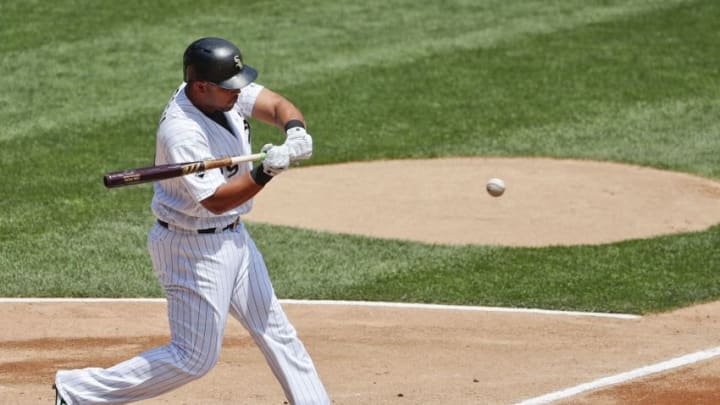In his first two seasons, Jose Abreu had proven himself to be a power hitting star for the Chicago White Sox. This year, Abreu has struggled. What has been the difference?
Jose Abreu burst on the scene for the Chicago White Sox. The Cuban first baseman was signed to a six year, $68 Million contract, and immediately made an impact on the South Side. In his first two seasons, Abreu produced a .303/.364/.540 batting line, hitting 66 home runs with 208 RBI. He had at least 30 homers and 100 RBI in both years, while making the All-Star Game and winning the Rookie of the Year and Silver Slugger awards in 2014.
This year has been a different story than what we have come from the powerful first baseman. His numbers have suffered this year, as he has hit at a .256/.313/.403 clip with seven home runs heading into today’s slate of action. If the White Sox are to right the ship and get back to their winning ways at the start of the year, Abreu will need to be a key part of that turnaround.
More from Call to the Pen
- Philadelphia Phillies, ready for a stretch run, bomb St. Louis Cardinals
- Philadelphia Phillies: The 4 players on the franchise’s Mount Rushmore
- Boston Red Sox fans should be upset over Mookie Betts’ comment
- Analyzing the Boston Red Sox trade for Dave Henderson and Spike Owen
- 2023 MLB postseason likely to have a strange look without Yankees, Red Sox, Cardinals
So, what has been different for Abreu this year? In looking at his stats, Abreu has actually hit the ball relatively well. His line drive rate is about league average at 25%, which is only slightly below the 27% rate he has in his career. Meanwhile, Abreu has been making more contact, putting the ball in play in 68% of his plate appearances, an increase of 5% since his rookie year. With a strikeout rate and a walk rate in line with his career norms, Abreu’s struggles are somewhat perplexing.
The first sign statistic that gives an answer to his difficulties this year would be his batting average on balls in play. Typically over .330, Abreu has a .300 BABip this year, which is close to league average. However, as his average BABip has been 44 points higher, this drop is indicative to his lower batting line.
In regards to his power numbers, it would seem as though Abreu should be performing better there as well. His groundball to fly ball rate has dropped to 0.85, as Abreu has been getting the ball in the air more frequently. However, only 8.0% of his fly balls have left the yard, as opposed to his career average of 14.5%, and even though Abreu is hitting the ball further than he had been.
However, he simply is not pulling the ball. Abreu has hit the ball the opposite way 33.2% of the time, a 5.6% increase over last season. Meanwhile, he has pulled the ball 33.2% of the time as well, a 4.4% decrease from last year. As with any power hitter, pulling the ball will likely produce more homers, which is certainly the case with Abreu. It is encouraging to see him use the entire field, but Abreu is not the type of player that should be spraying the ball all over the field.
Next: What to expect from Tim Anderson
Based on his numbers, Jose Abreu should see his power come back soon. But will that happen soon enough for the Chicago White Sox to right the ship?
